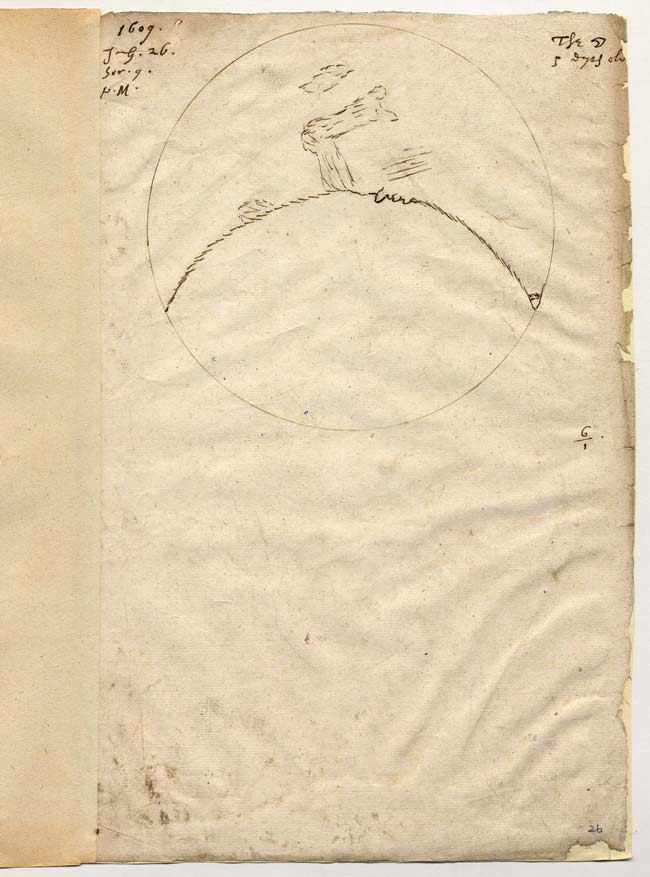As we learn (or at least should) at quite an early age, Galileo Galilei had quite the impact on science, making numerous improvements in telescopes and conducting early observations of the Moon, making the first map of our planet’s satellite. Right? Wrong. Despite the fact that he will always remain “father of modern observational astronomy” and his name will be forever recalled with respect, it seems somebody else beat him to the map.

The first drawing of the moon through a telescope, delimitating the terminator, the line that marks the boundary between day and night on the lunar surface.
As a matter of fact, englishman Thomas Harriot made the first drawing of the moon, in July 1609 (that’s exactly 400 years), a few months before Galileo, after looking through a telescope. Historian Allan Chapman explains how he preceded all the others and continued to make maps throughout the following decades.
Harrior studied at St Mary’s Hall (now part of Oriel College), Oxford, and then continued his work as a math teacher and joined Sir Walter Raleigh in many of his explorations. After felling from royal grace, he was imprisoned, but with help from Henry Percy, he became one of Europe’s leading mathematics authorities at the time, and not very long after that, he bought his first “Dutch trunke” (telescope) and used it to draw the surface of the moon, making him the first man to draw an astronomical object after looking at it through a telescope.
After recovering his wealth, he continued to make many maps, bettering many of the more famous drawings, but despite that, he remains relatively unknown. Why’s that?? If we were to take Chapman’s word for it, it’s because of his wealth, as he was a “well-maintained philosopher to a great and wealthy nobleman” with a generous salary, said to be “several times the level of the Warden of Wadham College, Oxford.”, which probably caused him not publishing his drawings. His wealth contrasted to Galileo and his financial problems. Pretty interesting, the Italian couldn’t afford to buy a telescope, so he understood how it works, and built one of his own.
“Thomas Harriot is an unsung hero of science,” Chapman said. “His drawings mark the beginning of the era of modern astronomy we now live in, where telescopes large and small give us extraordinary information about the universe we inhabit.””Thomas Harriot is an unsung hero of science,” Chapman said. “His drawings mark the beginning of the era of modern astronomy we now live in, where telescopes large and small give us extraordinary information about the universe we inhabit.”
Professor Andy Fabian, President of the Royal Astronomical Society, agrees.
“As an astrophysicist of the 21st century, I can only look back and marvel at the work of 17th century astronomers like Thomas Harriot,” Fabian said. “The world is right to celebrate Galileo in the International Year of Astronomy – but Harriot shouldn’t be forgotten!”










